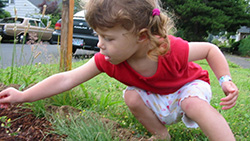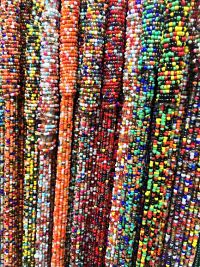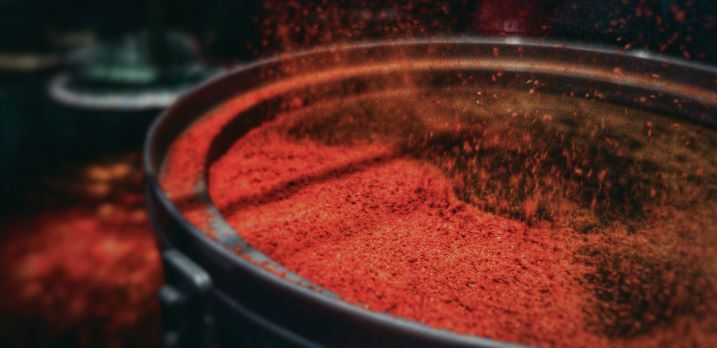Alarming levels of lead have been found in traditional cosmetics used in Hindu and Muslim religious practices and South and Southeast Asian cultures. High lead levels have also been found in the spice turmeric, particularly in smaller batches brought in from overseas.
Frequently Asked Questions: Lead in Traditional Cosmetics and Turmeric
English | Amharic | Arabic | Farsi | Hindi | Nepali | Pashto | Somali | Spanish | Urdu
Infographics
Sources of Lead
Lead Paint and Dust in Homes Built Before 1978
Lead dust is the most common way people are exposed to lead. Lead dust is often invisible. Projects that disturb painted surfaces can create large amounts of dust. Lead-based paint was used in more than 38 million homes until the amount of lead in paint was restricted in 1978. Projects that disturb painted surfaces in older homes can create large amounts of dust that can endanger children.

Soil
Soil may contain lead. Contaminated soil can be tracked into the home. Children may come into contact with lead by playing in bare soil.
Plumbing and Plumbing Fixtures
Most sources of drinking water have no lead or very low levels of lead. Most lead gets into drinking water after the water leaves the local well or treatment plant. This happens when the water comes into contact with plumbing materials containing lead. These include lead pipe and lead solder (commonly used until 1986) as well as faucets, valves, and other parts made of brass.

Children's Toys, Jewelry and Other Metals
Lead can be found in some children's products. It may be used to soften the plastic and make toys more flexible. Antique toys, toy jewelry, and other objects could be made or painted with lead-based materials. Children could be at risk for lead poisoning by biting, chewing or handling toys that contain lead or lead-based paint that has worn off from use.
Amulets (e.g. sheesha, tabiz and other metal charms), may be used by different cultures for spiritual purposes, including to protecting children from harm, promoting luck or reducing pain from teething. Lead can enter children's bodies when they put these items into their mouths.
To avoid lead poisoning, keep old toys, charms, amulets, keys and other metals away from young children. If your child wears an amulet, place it in a location where he or she cannot mouth it. If you think your child has been exposed, you may want to ask your health care provider for a blood lead test.

Spices and Candy
Imported spices and candies may contain lead. Spices brought in from the countries of Georgia, Pakistan, Nepal, Bangladesh, India and Morocco are known to have the highest lead concentrations. Often, spices enter the U.S. in unmarked containers with unknown brand information.
Spices such as turmeric, chili and paprika are commonly contaminated. Turmeric brought from India has been linked to lead poisoning cases in Oregon. A recent study tested lead levels in spices purchased in U.S. stores. Spices hand-carried in from other countries typically had much higher levels of lead than similar spices bought in U.S. stores.
Purchasing spices from local stores may decrease your risk of lead exposure.
Contact our program for information on testing spices for lead by a certified food laboratory.
Lead has been found in some candies imported from Mexico that are made with chili powder or tamarind. The candy may also be exposed to lead during the manufacturing process. Ink from the plastic or paper candy wrappers may contain lead that contaminates imported candy.
It is impossible to know if a candy, spice or food item contains lead by looking at or tasting it. People selling these items may be unaware that the products contain lead. Eating even small amounts of lead can be harmful to health and cause lead poisoning.

Traditional Pottery and Ceramics
Lead may be present in the glazes or decorations covering the surface of some traditional pottery. The glazing process binds the lead to the ceramicware, which, if done improperly, can leach lead into foods or liquids stored in these vessels.
Handmade, antique, heavily-pigmented, damaged or old ceramicware or pottery may contain lead and cause exposure. Foods and drinks prepared, stored or served in these types of ceramicware may cause lead poisoning. Hot foods and highly acidic foods can also break down glazed items more rapidly. Avoid preparing or serving foods in dishes with questionable or corroded glaze.
Concerned consumers can purchase a lead-testing kit in a hardware store or online to test their pottery, antique china and other ceramic items, although be aware that results might not be accurate. Look for a warning label stamped on the bottom of the item, such as "Not for Food Use--May Poison Food", or Proposition 65. Avoid using items with this type of warning for foods or liquids.
Home Remedies and Traditional/Folk Medicines
Lead has been identified in powders and tablets used for treating a variety of illnesses traditionally used by East Indian, Middle Eastern, West Asian and Hispanic cultures. Lead may be intentionally or unintentionally added to the traditional remedies during the manufacturing process or contaminate the product via the packaging. Persons selling these medicines may be unaware of the lead content in the products, particularly as lead might not be included on the list of ingredients.
- Greta and Azarcon are orange-pigmented powders used in Hispanic cultures to treat stomach illness or empacho. These powders are also used on teething babies and have been associated with lead content as high as 90%.
- Daw Tway is a remedy used in Thailand and Myanmar to assist digestion that has been found to contain lead.
- Ghasard is a brown powder used as a tonic in Indian folk medicine that also contains lead.
- If you or your family members use these products, you may want to ask your health care provider for a blood lead test.

Cosmetics and Ceremonial Powders
The Food and Drug Administration (FDA) regulates color additives in cosmetics and cosmetic paints. However, federal law does not require cosmetic manufacturers to obtain FDA approval before releasing their products to market. Manufacturers who adulterate their products with unregulated additives or ingredients could potentially expose consumers to lead and other metals through their cosmetics.
Imported cosmetics such as kohl, kajal and surma should be used with caution as they have and continue to be classified as sources of lead exposure. In some cultures, lead poisoning has occurred from kohl powder applied to the eyes of children and the umbilical cord stumps of newborns. If you or your family members use these products, you may want to ask your doctor for a blood lead test.
Lead has also been locally identified in powders used for religious ceremonies that are made with brightly-colored pigments, like sindoor. Sindoor is a red-pigmented powder used traditionally in Hindu and Sikh cultures to indicate marital status and for other religious practices. Children and adults can be exposed to lead through incidental ingestion of sindoor. Those who use this powder should wash their hands immediately after applying to scalp or body. Children should avoid handling sindoor. If you or your family members use sindoor, you may want to ask your doctor for a blood lead test.

Workplaces
Lead dust from work can be carried home on work clothes, shoes, hands or hair. This lead dust can harm other family members, especially children. If a pregnant woman is exposed to lead, it may harm her unborn child.
Hobbies
Some hobbies use lead. These hobbies include making pottery, stained glass, or refinishing furniture. Hunters who make their own bullets or anglers who make their own fishing sinkers can be exposed to lead fumes if they don't follow good practices. Fishing tackle (especially sinkers and jig heads) and lead-core fishing nets often contain lead.
See also